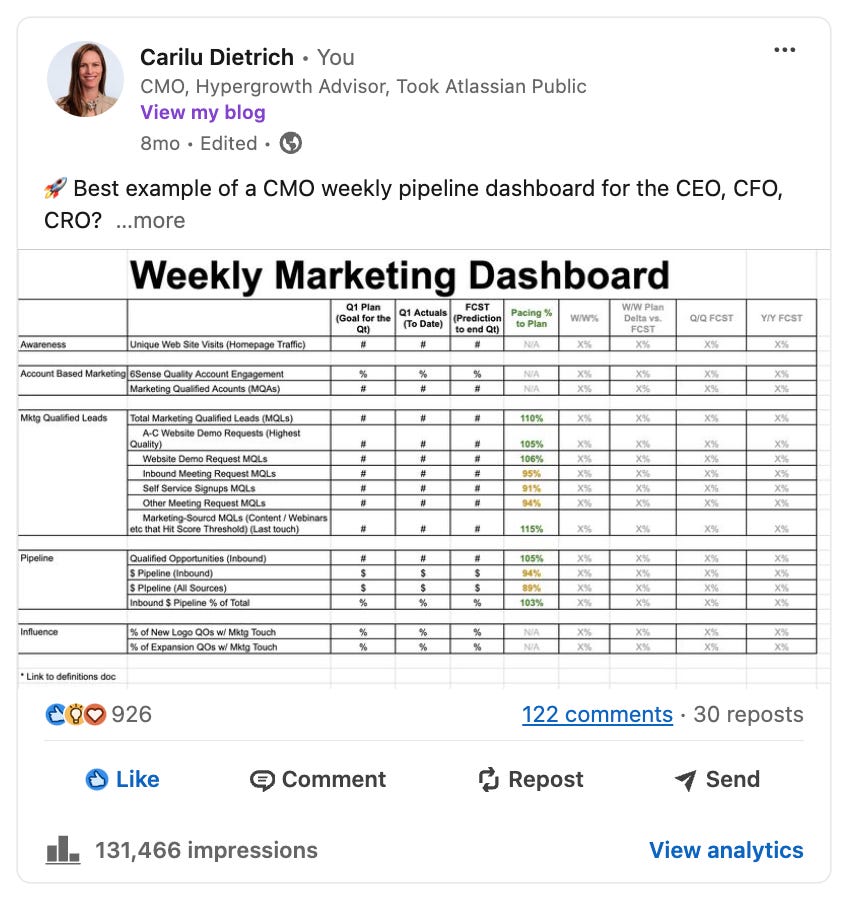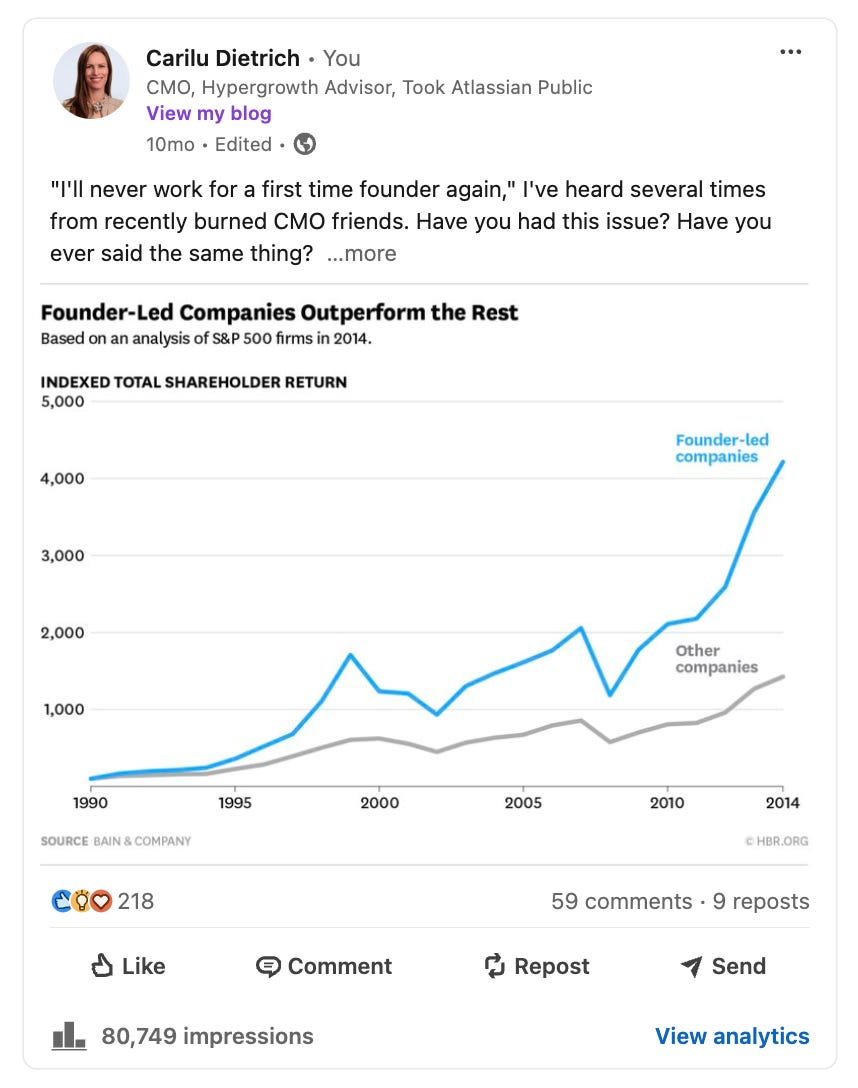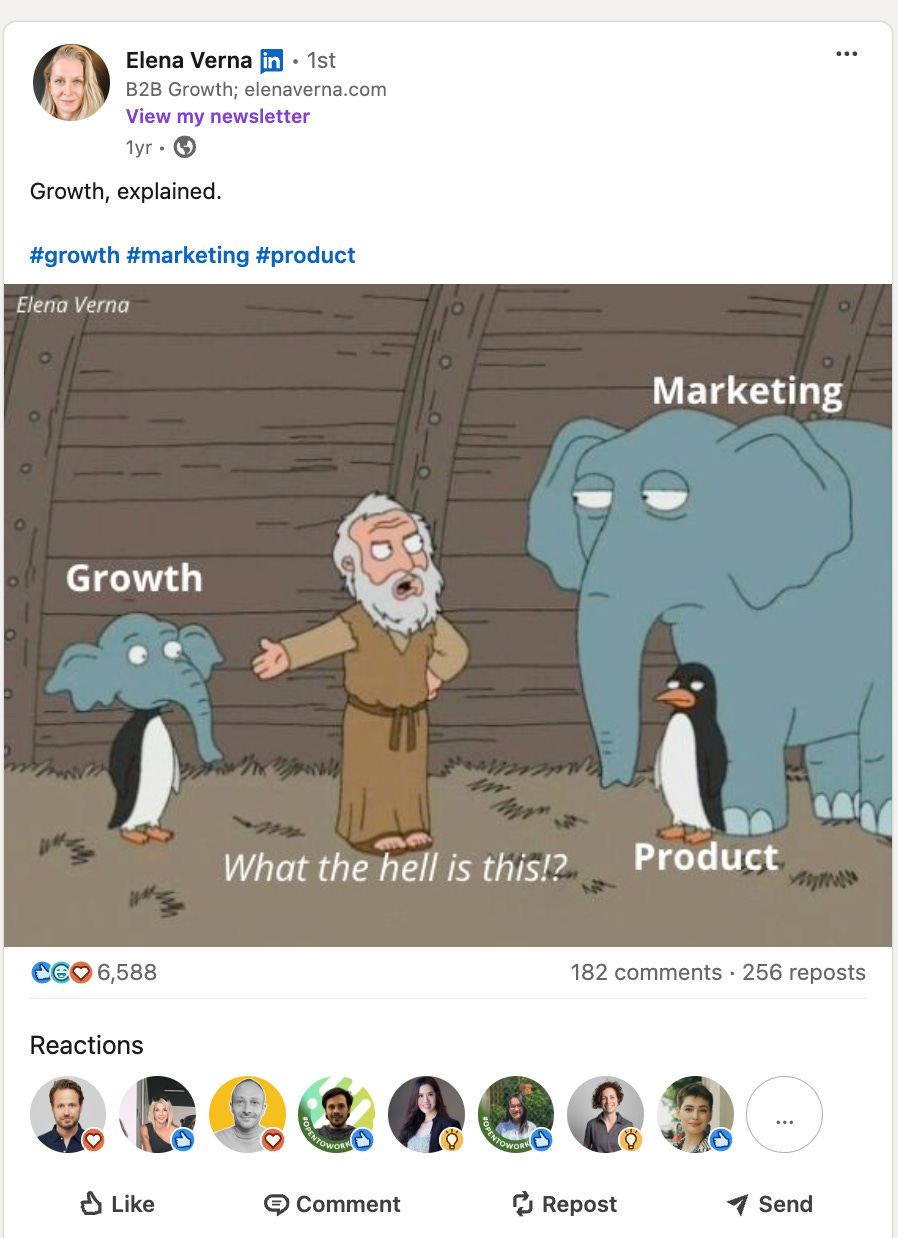How to Go Viral on LinkedIn: A Year in Review
Three Types of LinkedIn Posts Get the Most Traction
75,000+ views on LinkedIn was going viral (for me) until one of my posts this year exceeded 1 million impressions. It was an unexpected moment with unexpected lessons. In analyzing my LinkedIn posts, here is what has gone the most viral this year:
Universal Topics with Commenting Requirements
Fantastic Templates & Data
Controversial Topics that Encourage Debate
Funny and Entertaining Posts
1. Universal Topic with Commenting Requirement
Though I spend hours each week writing blogs and posting on LinkedIn, very few posts exceed the distribution of my followers. When I threw up a post with a quote from a mentor and a request for classmates for an upcoming course, I wasn’t expecting much. I needed 15 people to join me so I could split the costs of a public/private class. In a crazy twist of fate, almost 1,000 people commented asking to join, eliciting 3400 people to like the post and 93 to repost it. Here’s the post:
I didn’t expect the post to go viral, but in retrospect, I could see several aspects that contributed:
Universal challenge: I generally write for B2B executives and marketers. In contrast, this topic, “Simplifying Communications to Advance in Your Career,” was widely relevant to people of all industries and seniorities.
Hit a Nerve: So many people had stories and commentary to add. Apparently, clarity and brevity are big problems and pet peeves for many managers and employees alike.
Commenting Urgency: I stumbled into the “secret weapon” naively. By asking people to comment if they wanted to join the class, I triggered the LinkedIn algorithm to prioritize the post as “high engagement.” All the comments, at speed, lit the fire. Once it started to go a little viral, it started to go a lot viral. I “liked” and commented on the comments, as I always do, but the post took on a life of its own. Samsales, a LinkedIn influencer consulting agency, suggests that 10 people commenting in the first 10 minutes can help fuel your post’s virality. Generally, that’s hard to do. The urgency of the offer and the speed of all the commentary created a crazy trajectory. Unfortunately, it also created an untenable LinkedIn inbox for me (a challenge CEO of ChiliPiper Alina Vandenberghe identified in her recent breakdown of a similar comment- requesting viral post)
The act of effectively eliciting comments with an offer is a LinkedIn hack if it can be integrated in an authentic and non-annoying way. (I tested this hack again on the planning template I share below, offering to share the PDF with anyone who commented)
While virality was exciting, it didn’t substantially increase my followers or blog subscriptions. So far, the long, consistent game seems more important than one-hit wonders.
What else went semi-viral this year?
2. Fantastic Templates & Data
While not hitting 1M impressions, a number of posts with valuable data or practical templates went mini-viral, generating 75,000+ impressions and a number of reposts (screenshots and links below):
How to Evaluate a Company’s Momentum (270k)
A weekly marketing dashboard template (131k)
VC-Backed CMO salary guide (110k)
An Annual Plan on a Page (84k)
B2B Budgeting Benchmarks (There’s still time to take the survey here!) (76k)
These are all high-value assets that take time and depth to create. Fantastic data analysis has been a cornerstone of Peter Walker of Carta’s virality, and many brands’ quarterly or annual surveys that also go viral for their audiences.
3. Controversial Topics
Perhaps most expectedly, controversial topics that created debate and, thus, lots of comments went viral. Screenshots and links below.
“Should you advertise against competitors?” The comments on this post were particularly interesting. Many people commented on how competitive ads lacked integrity and sophistication, while actual users of the products felt like the ads recognized their true pain and spoke to them. The strong feelings and debate only heightened the algorithm-instigating distribution.
“I’ll never work for a first-time founder again.” This is a visceral pain point for many executives who have had bad experiences. While I concluded that I would definitely work for one myself, I gave voice to the controversy, and people had so much to say.
4. Funny and Entertaining
I’m not very funny or entertaining, though I’d love to be someday : ) While I don’t have any viral posts in this category, I admire Elena Verna and her constant stream of funny (and insightful) memes that she mixes in with how-to articles. Here’s one of her memes with more than 6,500 likes, double my most viral post ever (though she does have 6x the followers)
Conclusion: Hacking or Helping?
While it’s exciting to see these different posts go viral, I struggle with ‘milking’ any one tactic too substantially. Some universal truths feel cliche and overshared. Sometimes asking for comments feels needy (and the DMs are hard to manage). Sometimes, controversial clickbait irritates me—it seems designed to provoke - I don’t want to be that person. And, I’m worried about copyright issues with memes. Won’t we get in trouble using other people’s images?
It’s a tricky balance. How can we maximize our reach on LinkedIn while remaining authentic and natural? More fantastic researh for sure - but that’s time intensive. I still have a day-job (I say as I finish this blog at 11:45pm).
Let me know how you approach it or if you have any tips for me!
Carilu Dietrich is a former CMO, most notably the head of marketing that took Atlassian public. She currently advises CEOs and CMOs of high-growth tech companies. Carilu helps leaders operationalize the chaos of scale, see around corners, and improve marketing and company performance.












Great examples! I really stumbled on being too formal. But it is my personality. How can I grow without forcing too much?
i never thought the day would come when viral and linkedin would be used in the same sentence.